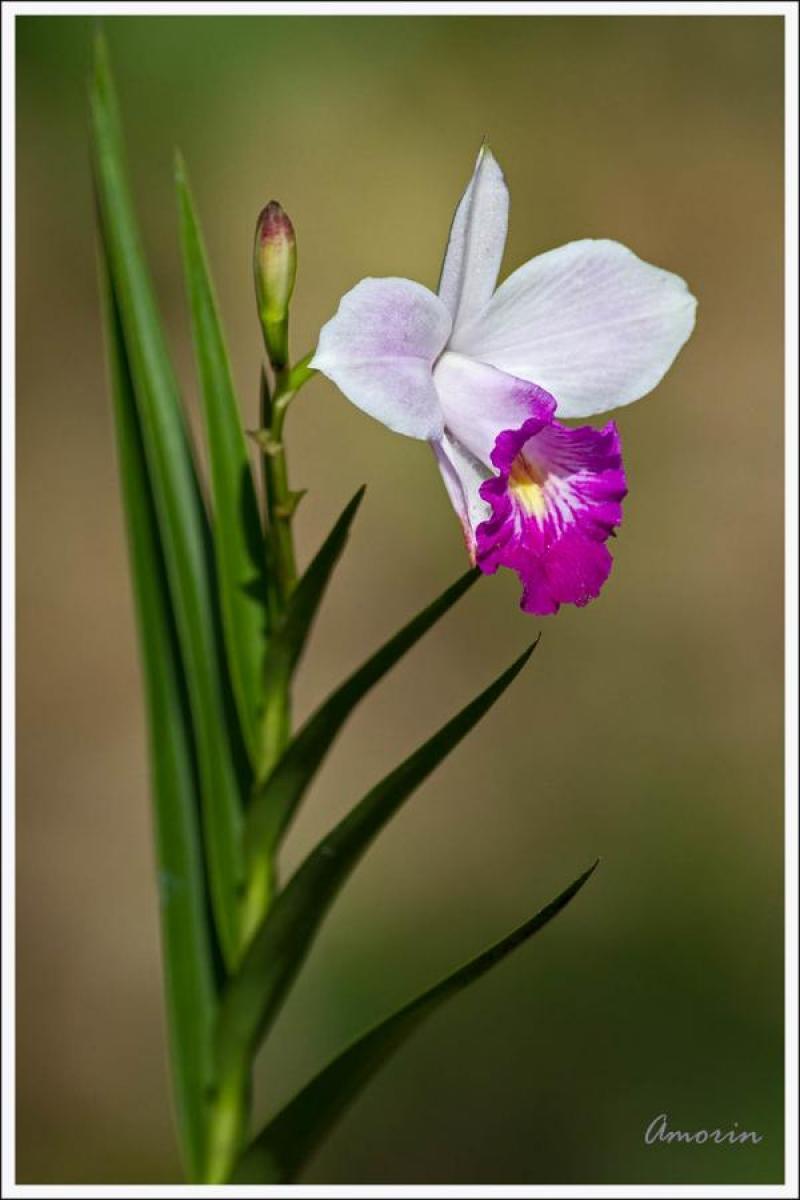Arundina graminifolia
Also known as: The Grass or Arundina graminifolia h.f. alba Limodorum graminifolium Arundina graminifolia h.f. aquinii Arundina graminifolia h.v. graminifolia Arundina chinensis Arundina caespitosa Arundina maculata Arundina sanderiana Arundina speciosa var. sarasinorum Arundina revoluta Arundina pulchra Arundina pulchella Arundina stenopetala Cymbidium meyenii Arundina speciosa Arundina meyenii Arundina philippii Cymbidium speciosum Arundina graminifolia var. chinensis Arundina densiflora Arundina densa Arundina chinensis var. major Arundina affinis Arundina minor Arundina bambusifolia Arundina graminifolia ssp. graminifolia Arundina philippii var. malayana Arundina revoluta var. borneensis Arundina graminifolia var. revoluta Arundina graminifolia ssp. caespitosa Cymbidium bambusifolium Ophrys arundinacea The Bamboo Orchid in the subfamily: Epidendroideae
Native to: Bhutan Cambodia China Indonesia Myanmar Sikkim - India Thailand
General Information
The Grass is a cool to warm growing terrestrial orchid belonging to the sub family Epidendroideae native to Bhutan, Cambodia, China, Indonesia, Myanmar, India, and Thailand.
Plant Description
Grows to 200-300cm. Each new growth has numerous erect arching, lance shaped leaves that grow to 0.75-30cm long. Pseudobulbs grow to 2-300cm
Substrate(s)
- Coarse
- Treefern
- Sand
Care Notes
These orchids grow on the forest floor so are used to rich soil containing plenty of organic matter that is always moist (but not always wet), and prefer constant conditions in terms of humidity, temperature and water supply. They may not be as forgiving as epiphytes in regards to sudden changes in growing conditions so it is wise to ease them into new conditions over a the space of a few days, and repot as infrequently as possible.
Keep an eye on the plants condition regularly as they can decline suddenly if the conditions are not just right. It is more important to keep water supply constant rather than frequent - overwatering often causes rot which can quickly set in, especially in warmer conditions.
These can be grown in shady, moist areas in the garden, supplied they have protection from abrupt changes caused by the elements, e.g. dry winds, frost etc. Being grown around companion plants such as ferns and bromeliads will help build and retain the humidity they require throughout the year.
Climate
Grows at low to high elevations. Rainfall ranges from 5mm to 818mm per day, heaviest in July and lightest in December. Humidity ranges from 57% to 86%, highest in July and lowest in March. Temperature ranges from 7C to 29C, highest in April (22C to 29C) and lowest in January (7C to 20C).
Watering
These orchids are sensitive to excessive watering and should only be watered when they look thirsty. Water infrequently and ensure that the roots are dry before watering. Keep an eye on them especially during hot weather as overwatering can lead to rot, whereas underwatering may result in wilting or shriveling, which while unattractive, will not kill the plant.
Fertiliser
Apply liquid based fertiliser per recommended directions. They can benefit from a high phosphate fertiliser leading up to flowering season, followed by a high nitrogen fertiliser when new growth appears, and a balanced fertiliser in other times. These orchids can also tolerate slow release fertiliser applied 1-2 pellets per cup (250ml) of media.
Use balanced fertiliser during Spring and Summer. Apply fertiliser regularly at half strength year round. Use a high Nitrogen fertiliser during Spring and Summer. Use a high Phosphorous fertiliser during Summer.Potting
These plants can be sensitive to repotting though should not require repotting regularly. Repotting should be done when the mix has broken down to the point that it doesn't absorb water or holds onto water for far too long, usually the plant shows a decline in growth as well.
The mix should be free draining, with a blend of 30% inorganic ingredients such as coarse sand, gravel or perlite, mixed in with about 70% organic ingredients such as peat, leaf litter or decomposed bark. Avoid commercial potting mixes as they can vary wildly and may contain "wetting agents" that can hold onto water for loo long, causing rotting and stunted growth.
Repotting is best done annually.




















